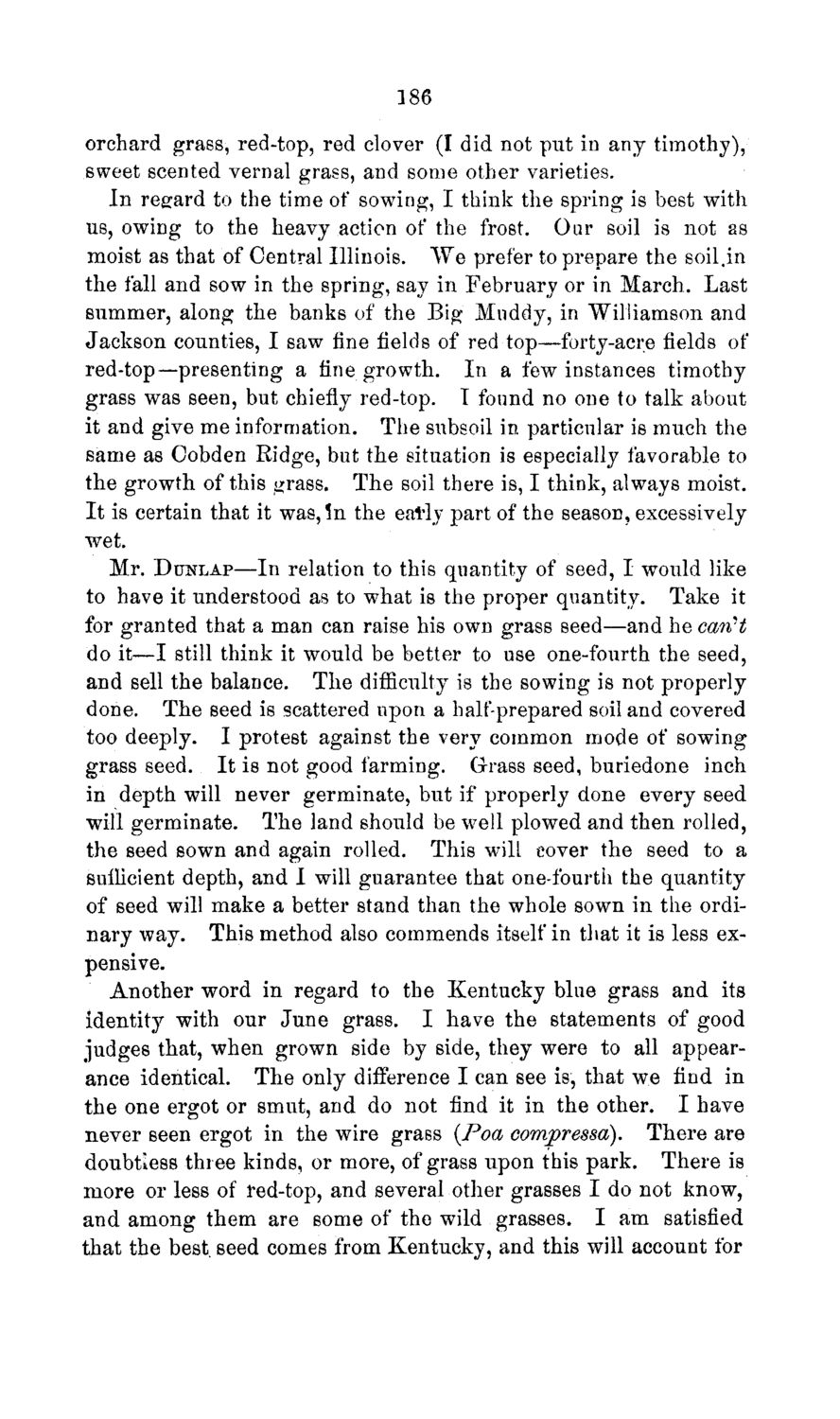| |
| |
Caption: Board of Trustees Minutes - 1869
This is a reduced-resolution page image for fast online browsing.

EXTRACTED TEXT FROM PAGE:
386 orchard grass, red-top, red clover (I did not put in any timothy), sweet scented vernal grass, and some other varieties. In regard to the time of sowing, I think the spring is best with us, owing to the heavy action of the frost. Oar soil is not as moist as that of Central Illinois. We prefer to prepare the soil.in the fall and sow in the spring, say in February or in March. Last summer, along the banks of the Big Muddy, in Williamson and Jackson counties, I saw fine fields of red top—forty-acre fields of red-top—presenting a fine growth. In a few instances timothy grass was seen, but chiefly red-top. T found no one to talk about it and give me information. The subsoil in particular is much the same as Cobden Ridge, but the situation is especially favorable to the growth of this grass. The soil there is, I think, always moist. It is certain that it was, In the early part of the season, excessively wet. Mr. DUNLAP—In relation to this quantity of seed, I would like to have it understood as to what is the proper quantity. Take it for granted that a man can raise his own grass seed—and he canH do it—I still think it would be better to use one-fourth the seed, and sell the balance. The difficulty is the sowing is not properly done. The seed is scattered upon a half-prepared soil and covered too deeply. I protest against the very common mode of sowing grass seed. It is not good farming. Grass seed, buriedone inch in depth will never germinate, but if properly done every seed will germinate. The land should be well plowed and then rolled, the seed sown and again rolled. This will cover the seed to a sufficient depth, and I will guarantee that one-fourth the quantity of seed will make a better stand than the whole sown in the ordinary way. This method also commends itself in that it is less expensive. Another word in regard to the Kentucky blue grass and its identity with our June grass. I have the statements of good judges that, when grown side by side, they were to all appearance identical. The only difference I can see is, that we find in the one ergot or smut, and do not find it in the other. I have never seen ergot in the wire grass {Poa compressa). There are doubtless three kinds, or more, of grass upon this park. There is more or less of red-top, and several other grasses I do not know, and among them are some of the wild grasses. I am satisfied that the best seed comes from Kentucky, and this will account for
| |